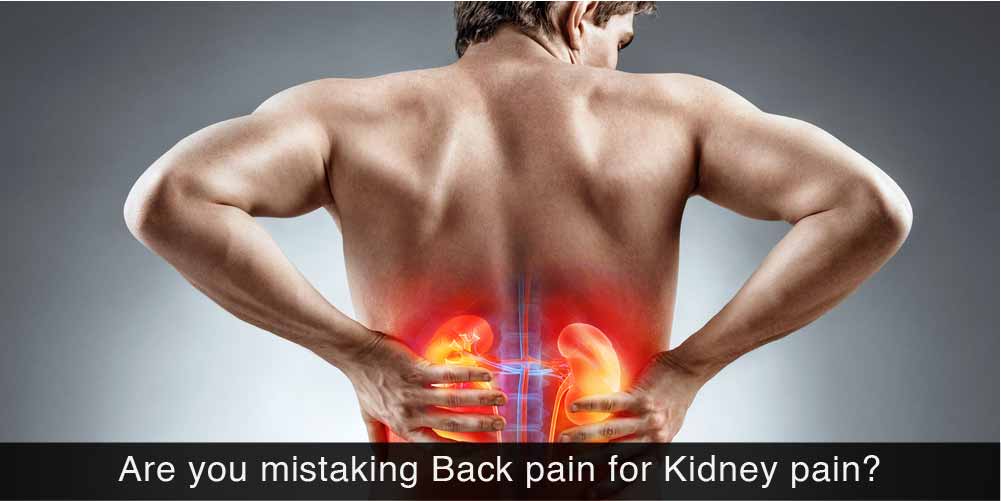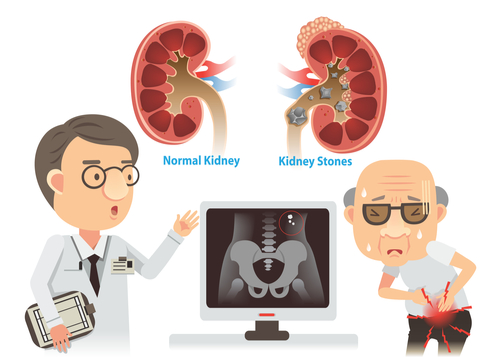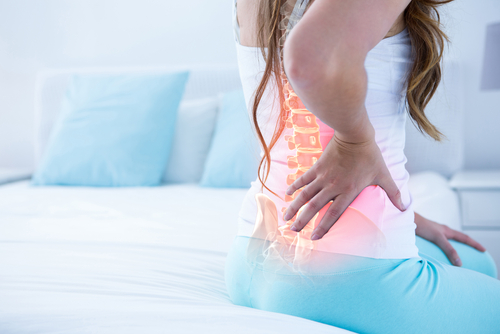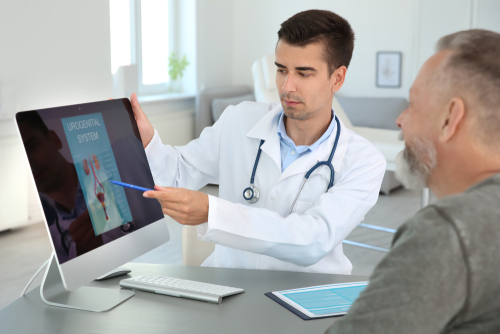
When trying to determine if the pain is coming from the kidneys or is just back pain, you need to take into account:
- The location of pain
- Type and severity of the pain
- Accompanying symptoms, you have any
In this blog, we discuss the main characteristics, location, severity, and any accompanying symptoms to identify if it is kidney pain or a backache. Also, find out when is the time you should see your doctor for the pain.
Table of Contents
Kidney Pain vs. Back Pain
Kidneys are located towards the back, below the rib cage. It is often difficult to differentiate between back pain and pain occurring due to kidney stones. Apart from the pain, other symptoms can help the patient identify the source of the pain.
The location, radiation, accompanying symptoms and severity of the pain is different, depending on whether the pain is due to kidney stones or back pain. (Also Read: 8 Signs that you have Kidney Stones)
Identify kidney pain
Kidneys are 2 bean-shaped organs located below the ribs, one on each side of the spinal cord. Kidney pain is often caused due to a kidney infection or kidney stone in the urethra, the tubes coming out of the kidney.
Causes of kidney pain
Conditions that can cause kidney pain include:
- Urinary Tract Infections or UTIs
- kidney infections
- kidney stones
- trauma or injury to the kidneys
- blood clots in the kidneys
- kidney cyst
- polycystic kidney disease
- renal vein thromboisis
If the person is having pain because of kidney stones or kidney infection, it will have the following characteristics-
Location of kidney pain
Patients with kidney stones or infections generally feel pain in the flank, the area on either side of the spine, between the bottom of the ribcage and the hips. This pain usually occurs on one side of the body, but can also occur on both sides.
Radiation of kidney pain
The pain due to kidney stones can sometimes radiate to the inner thighs or lower abdomen.
The severity of kidney pain
Kidney pain is classified as per its severity. Kidney pain can be severe or mild. A patient generally has severe pain due to kidney stones. The pain is mild in case of kidney infection.
Accompanying Symptoms of kidney pain
In the case of kidney stones or a kidney infection, the patient may also experience the following symptoms:
- Fever
- Chills
- Nausea and vomiting
- Dark or cloudy urine
- Urgent need to pee
- Pain while urinating
- Recent bladder infection
- Blood in urine
- Small kidney stones, resembling gravel in the urine.
How to relieve kidney pain?
- Drink parsley and cranberry juice
- Take a warm Epsom salt bath
- Use a hot pad
- Monitor your alcohol consumption
- Add citrus fruits to your diet
- Take prescribed pain killers
Also Read:
Kidney Stones Treatment without Surgery
Identify back pain
Back pain is a common type of pain that can occur due to several reasons including tiredeness, muscle strain, lifting heavy weights, exhausting schedule, the problem in the muscles, bones, or nerves in the back, etc. Back pain is more common than kidney pain.
Causes of back pain
Strain in a muscle or ligament in the back is the common cause of back pain. You can strain your backs from overstretching, lifting a lot of weight, or incorrect postures while sitting or standing for long hours.
Other causes of back pain can be:
- Standing or sitting for a long period
- Muscle spasms or tension
- Injury to the back (like fractures or falling)
- Damaged, dislocated, or ruptured discs (of the back)
- Abnormal curvature of the spine
- Tumors
More serious medical conditions that can cause back pain include:
- Endometriosis
- Inflammatory diseases, like arthritis and spondylitis
- Osteoporosis
- Spine Cancer
- Infections
- Abdominal Aortic Aneurysm
- Shingles
- Cauda Equina Syndrome (affects the nerves at the base of the spine)
Back pain can be identified by the following features:
Location of back Pain
A person can have back pain anywhere in the back but is most commonly located in the lower back or one of the buttocks.
Radiation of back pain
The radiation of back pain broadly varies as per the cause. Nerve pain can spread to the lower leg. Pain due to muscle strain is usually felt in the back and does not radiate.
Patient Story: “I’m glad that I found Pristyn Care” -Aryaman Sisodiya, 23
The severity of the back pain
Back pain can be described as acute or chronic based on how long the individual has had it. Back pain often shoots down one leg. Acute back pain can last from a few days to weeks. Subacute pain can last from 6 weeks to 3 months. Chronic pain can last more than 3 months straight.
Accompanying symptoms of back pain
Other symptoms that the individual may experience along with back pain are:
- Painful, swollen spot which can also feel tender to the touch
- Muscle spasms or cramping around the painful area
- In the case of nerve pain, the individual may feel numbness or weakness in one or both of the legs
Home remedies for fast back pain relief
- Maintain healthy body weight and lose weight if you are obese
- Use heat and cold
- Do stretching exercises
- Use prescribed over the counter pain relief medicines or cream.
- Reduce Stress
- Wear comfortable shoes.
- Sit with your back straight.
- Sleep
- Reduce stress
Consult a doctor
It may be hard to differentiate between normal back pain and kidney pain. Try to differentiate between the other symptoms and features to know the exact type of pain that you are having. In case you are having a hard time figuring that out, consider seeing an experienced doctor for accurate evaluation and treatment (if required).
Acute to mild back pain is treatable without seeing a doctor. But, in case it does not go away, and gets more severe or spreads, you should visit your doctor.
Back pain is just one symptom of a kidney stone or kidney infection.
Case Study: Woman complaining of lower back pain had two kidney stones











